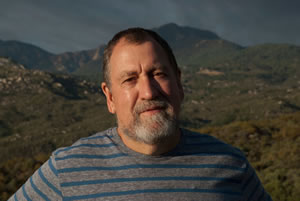|
Dadaist artists like Marcel Duchamp often incorporated "found objects" into their paintings and sculptures, using what they stumbled upon in the real world as a source of inspiration and serendipitous discovery for their creative work. Writers also borrow descriptive imagery, characters, even plot lines from the outside world, keeping what Elizabeth Bishop called "the writer's eye" trained on our surroundings. It is easy to spot a writer in public: he/she will be the one studying the scene rather than hypnotized by a tiny iPhone screen—forever on the alert, like a hunter in search of prey.
Think locally! There is no need to look to distant horizons when we can find rich material close to home, especially ambient sense impressions and the fine details of descriptive imagery, which establish setting and help set the tone of a story.
I often set my stories and novels in places where I live or have recently lived, harvesting details from my surroundings, bypassing the oft inept middleman of memory. I need merely walk outside and sniff creosote bush on the air, feel midday heat baked into the ground underfoot, watch a granite spiny lizard do vertical pushups on the fissured bark of a chinaberry tree or a crow rattling dice back in its throat from high in a Coulter pine, the mountains shimmering in rising heat waves. Such close-at-hand imagery immediately suggests atmosphere, which is, of course, much the point of descriptive passages. It may even suggest narrative motifs, so that the story seems to spring up out of the ground under our feet.
I think of James Joyce's Dublin, that dreary, damp, quixotic city which was his endless source of inspiration. Or Faulkner's Yoknapatawpha County—that Biblical land in Confederate America—or Flannery O'Connor's half-demented, backwater Georgia. Or Dickens' nineteenth century London, its air choked with coal smoke. A friend in Eugene, Oregon, where I grew up, tells of watching Ken Kesey leaning against a wall, arms folded, studying a construction crew paving a downtown sidewalk. Kesey was doing his writerly homework. We know Dickens walked London streets at night, studying prostitutes and street urchins, how lantern light spilled from a public house and painted the wet cobblestones. Many such observations were transplanted whole into his novels. Faulkner did his homework while out hunting or walking the back roads of Oxford, Mississippi. Emily Dickinson did hers without leaving home, noting a fly buzz or "new blossoms in the glass" or some other minutiae of her domestic world. Many of the finest literary stylists appear to find the seeds of style in their immediate environs, so we may wonder whether they are writing the scene or it is writing them.
I have done my homework walking icy roads of Upstate New York, where I once lived, noting snow feathering off roadside drifts in the wind…finding it resurrected in a story I write about a woman who loses her car in JFK's long term parking lot in a blinding blizzard and freezes to death within a few hundred yards of the airport terminal. Jehovah's Witnesses, who own a farm nearby, gawk at me from a passing SUV, as if I am the devil incarnate…and drive on into a story I will soon write, inspired by their gray disapproving faces. Then there was the horrible accident my wife and I had on the New York State Thruway, driving home from New York City at one a.m. A driver fell asleep at the wheel and rear-ended us at ninety miles an hour, sending our van careening like a pool ball. Emerging from the van, we beheld a ghostly figure staggering toward us, silhouetted against his burning car. My story "How I Died" was born from that near-deadly experience. Joseph Conrad would advise us never to waste fraught moments in our lives (we all have them). They are grist for the writer's mill. Serendipity, that tireless motor of invention, waits for us to stumble onto it.
The California high desert inspired my second collection, Ashes Rain Down. The fragility of that drought-stricken environment suggested the fragility of our imperiled planet and the book's post-apocalyptic theme as surely as did my own imaginings. In L.A., where I now live, I am bombarded by impressions: oranges left to rot on neighbors' trees symbolize the wanton excess of La La Land, police helicopters circle predatorily overhead, while the homeless push rattling shopping carts along streets lined with Raymond Chandler bungalows, palm trees, and bird of paradise plants. What a wealth of material awaits me here.
Everywhere on earth there is abundant fodder for the astute writer/observer. We must keep our senses open, must realize we are never off the clock as writers. That is the burden and the joy of a creative life.
|


